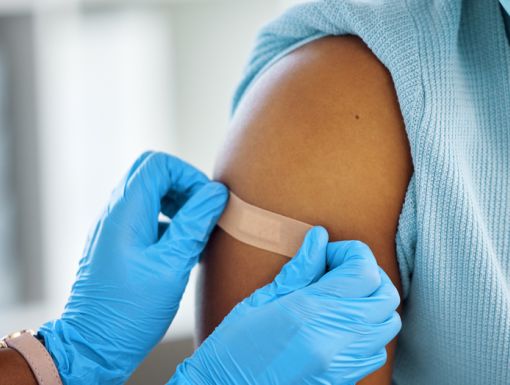
Top Facts About 'Flesh-Eating Bacteria' and Warming Coastal Waters
Vibrio vulnificus doesn’t elicit the same type of public attention as “flesh-eating bacteria.” Yet, they are virtually one and the same.
Call it what you will, this bacterial infection could be on the rise, thanks in part to warming coastal waters, scientists say. People can get it when contaminated seawater enters an open wound or by consuming uncooked or undercooked shellfish, including our cherished oysters on the half shell.
Vibrio vulnificus is relatively rare, with only 100 to 200 cases reported each year in the United States. On Sept. 1, 2023, the Centers for Disease Control and Prevention issued a health advisory telling healthcare providers and the public to be aware that this bacteria may be lurking in our waters.
How serious is this threat? For most people who do not have underlying health conditions, the threat is low. The CDC says most people with a mild case of vibriosis recover in about three days. Cases are rare, but those who suffer a serious form can get seriously ill and need intensive care. About 20% of people with this rare type of serious infection die, sometimes within a day or two of becoming ill.
Vibrio vulnificus hot streak
Most of us know that warmer temperatures in the Gulf of Mexico and other bodies of water provide rocket fuel for hurricanes and tropical storms. But as the temperatures increase, experts are concerned that vibrio will rise as well.
The Louisiana Department of Health has not documented an increase in cases as of the end of August. Year to date, only eight cases had been reported in the state during 2023. During the previous five years, an average of only 13 cases per year were reported.
Health experts believe environmental conditions could cause the numbers to rise, and they want the public to be aware.
Vibrio flourishes in warm saltwater or brackish water. Typically, the bacteria are present in higher concentrations between May and October when water temperatures are warmer. About 80% of infections occur during these months, the CDC says.
If you’ve stepped outside lately, you know that summer 2023 has been anything but typical. Record heat and humidity have caused water temperatures in the Gulf to rise to the highest level every observed. Thus, the CDC’s recent advisory.
The flesh-eating bacteria moniker for Vibrio vulnificus derives from the fact that being infected with it can cause flesh around an open wound to die. Person-to-person transmission has not been reported.
It’s important to know that vibrio vulnificus is one species in the vibrio group of bacteria. Other strains are either harmless or cause mild symptoms.
Symptoms, diagnosis and treatment
If you encounter vibrio vulnificus, you’ll likely know it within 24 hours. Symptoms, which usually come on suddenly, include:
- Fever and chills
- Skin redness or swelling
- Nausea, diarrhea and vomiting
- Dizziness or weakness
- Altered mental state
People with health conditions such as liver disease, diabetes, chronic kidney failure and hemochromatosis face greater risks, experts say.
It’s important to seek treatment immediately if you think you have vibrio. If treated right away, most people recover.
A health care professional can diagnose a vibrio vulnificus infection by taking a patient’s blood or stool sample. Antibiotics can be used to treat infections.
In some cases, the CDC says doctors may need to remove dead or infected tissue when the infection is rapidly progressing or severe.
Prevention
The CDC and other health experts offer some straightforward recommendations on how to avoid encountering vibrio vulnificus. They include:
- If you have a wound, including those from a recent surgery, piercing, or tattoo, don’t venture into brackish water. This includes wading at the beach.
- If wounded while in brackish or salt water, clean the wound with an over-the-counter wound cleanser or with clean water and soap and seek care if the area becomes inflamed.
- Cover your wound with a waterproof bandage if it could come into contact with saltwater, brackish water, or raw or undercooked seafood and its juices.
- Avoid consuming raw or undercooked shellfish, including oysters, especially if you are pregnant or at high risk for infection due to health conditions.
- After preparing or handling raw shellfish, wash your hands thoroughly to avoid contaminating other foods.
With these simple precautions, most people have little to fear from vibrio vulnificus.



